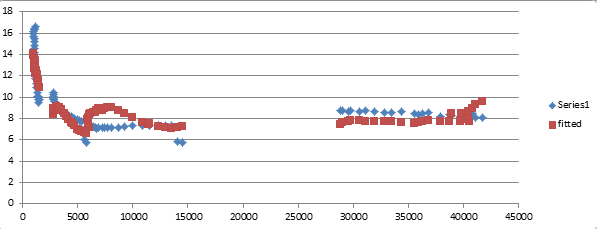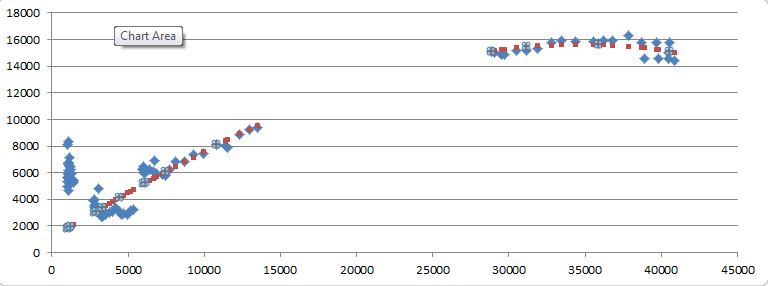The right to consume clickbaity outrage news on the internet, with peace and dignity
Some current affairs topics refuse to go away. They start as a minor irritation you scroll past in the online media. Then they develop into a more serious outbreak, covering the news in debilitating fashion. Every poorly informed article or overwrought tweet causes you throbbing, continuous pain, sucking the joy out of your daily doomscroll, until the only humane solution is to seek the sweet, peaceful relief of writing your own blog post on the topic. So it is with the debate on Assisted Dying (AD).
So here goes.
At the core of the question of whether or not there should be some legal framework for Assisted Dying is one of agency. Specifically, it prompts the question: What right does an individual have to exterminate his own live?
We hold these truths to be self-evident…
It has been commonly held in Western society that a rational individual should enjoy all and any freedoms which do not directly impinge on the freedoms of others – or as a pugilistically inclined fellow student at Trinity once put it, “the limit of one man’s fist is another’s face”. It follows from this that a rational individual who wishes to commit suicide should not be held back from jumping, provided it is done in a way that minimises collateral blood splatter.
But it is in the very word ‘rational’ that the rub lies. For implicit in our understanding of what is rational is an acceptance of the root desire a human – in common with all living things – must have to continue to live. It is taken as axiomatic that life, above all, craves its own continuance. We see it in every ant, every garden weed, every government agency. So the wisdom holds that he who would go against this most basic instinct has lost his mind, and therefore can no longer be presumed to enjoy the freedoms we allow to ‘rational’ individuals – it’s padded cells and happy pills for you, dear chap.
Don’t jump!…
This paternalism for the suicidal is not beyond criticism – at very least it should be clear that the policy is predicated on the assumption that a determined self-destroyer will always retain sufficient sovereignty to carry out the act, irrespective of the rules. We don’t so much prohibit suicide, as deny freedom to those who have engaged in clumsy attempts at self-harm. Still, the policy enjoys wide public support and a long tradition in almost all Western countries.
In this context, I can’t help but marvel at the incongruity between a system that would at once lock away one set of people for the sin of wanting to end their own lives, while at the same time creating the legal space, in some cases even taxpayer-funded, to provide the practical means for a different set of people to end theirs. A physically healthy 18 year old who tells her therapist she wants to kill herself can be committed to prevent self-harm; but if she waits forty years and can prove she has some chronic pain, the same doctors will stick the death serum in her arm.
…no wait, your life really sucks. Jump!
To square this circle, society must make some judgement of when and under which conditions the desire for suicide can be considered ‘rational’. If you have a healthy young body, you’d have to be crazy to want to destroy it. If you’re body is covered in wrinkles and riddled with cancer, you might just have a point. In other words, we must make an evaluation of what is the value of residual life.
Who precisely makes this evaluation and under which criteria? This is not a trivial question, neither in law nor in moral reasoning. Health economics has some tools to value life, notably the concept of a Quality-Adjusted Life Years (QALYs), which are used to determine objective thresholds for the approval and administration of expensive treatments. But these are blunt tools. Using them to set solid benchmarks for AD is anything but straightforward. Even if it were possible to decide how much remaining life is enough to force someone to live it, the thornier question of how much suffering a person should be expected to endure during that period cannot be answered with statistical tools alone.
Nine out of ten doctors agree … with whatever pays their golf club membership dues
And so most AD regimes rely on the opinion of two medical experts, and some round concepts to do with ‘chronic pain’ or ‘terminal illness’ (being born is a terminal illness, but okay…) Here we are far from out of the woods – opponents of AD point to the risk of slippage, the arbitrary nature of medical opinion, and the influence greedy heirs or a cash-strapped healthcare system might put on an fragile, elderly patient who doesn’t “want to be a burden”. If we are killing impoverished, unemployed 45 year olds, depressed because they can’t pay their rent, how far have we come from the ‘peace and dignity’ the Death Serum Dispensers promised our beloved parents would be free to choose?
You can’t place a value on something unless you know what it is for
But the thing I find most interesting in the AD debate is not where or how this line is drawn, but rather what the line itself tells us about our society. The very act of valuing the quality of residual human life reveals something fundamental about what we see as the purpose of life itself.
In those distant times before social media, a majority of Westerners still did not consider that they had come to earth in order to seek happiness. Looking further back into the pre-history of the 20th Century and before, much of our Judaeo-Christian theology exhorts us to treat such indulgences as sinful. We are here, so the stoic reasoning goes, in order to suffer, to cleanse our spirits and prepare for a higher state of being in the next life. A painful exit from this world was a cleansing one; the peace ultimately achieved all the more divine.
But increasingly, it is hedonism that underpins our culture now. We live for no higher purpose than the pleasure of our own flesh. It follows that pain is abhorrent and must be avoided at all costs. As that flesh fails, and the possibility of pleasuring it recedes, there can be no reason for a hedonist to keep living. Of course, this is itself a pernicious death spiral, because hedonism is too shallow a philosophy to provide any meaningful fulfillment, especially for those who suffer the kinds of trauma that make superficial happiness appear elusive. This is why more and more young people are turning to depression, medication and ultimately, to the Assisted Dying solutions that, a decade ago, would have landed them in a mental hospital. No one is even inviting them to think about changing their world view from self-absorbed hedonism, to living a life in service of others.
I just want the Almighty to have the right to die with dignity
However, I remain an optimist. Contrary to Nietzsche’s assertions, rumours of God’s death are greatly exaggerated. He might be chronically pained to see the sorry state of our culture. It might even seem like He is terminally ill. But I’m not ready to sign off on His dose of death serum quite yet. So I’ll put my back behind stopping this Assisted Dying madness.
And I will remain a believer in life – the fun & quirky; the hard & ugly; the warts, the cancer cells and all.


